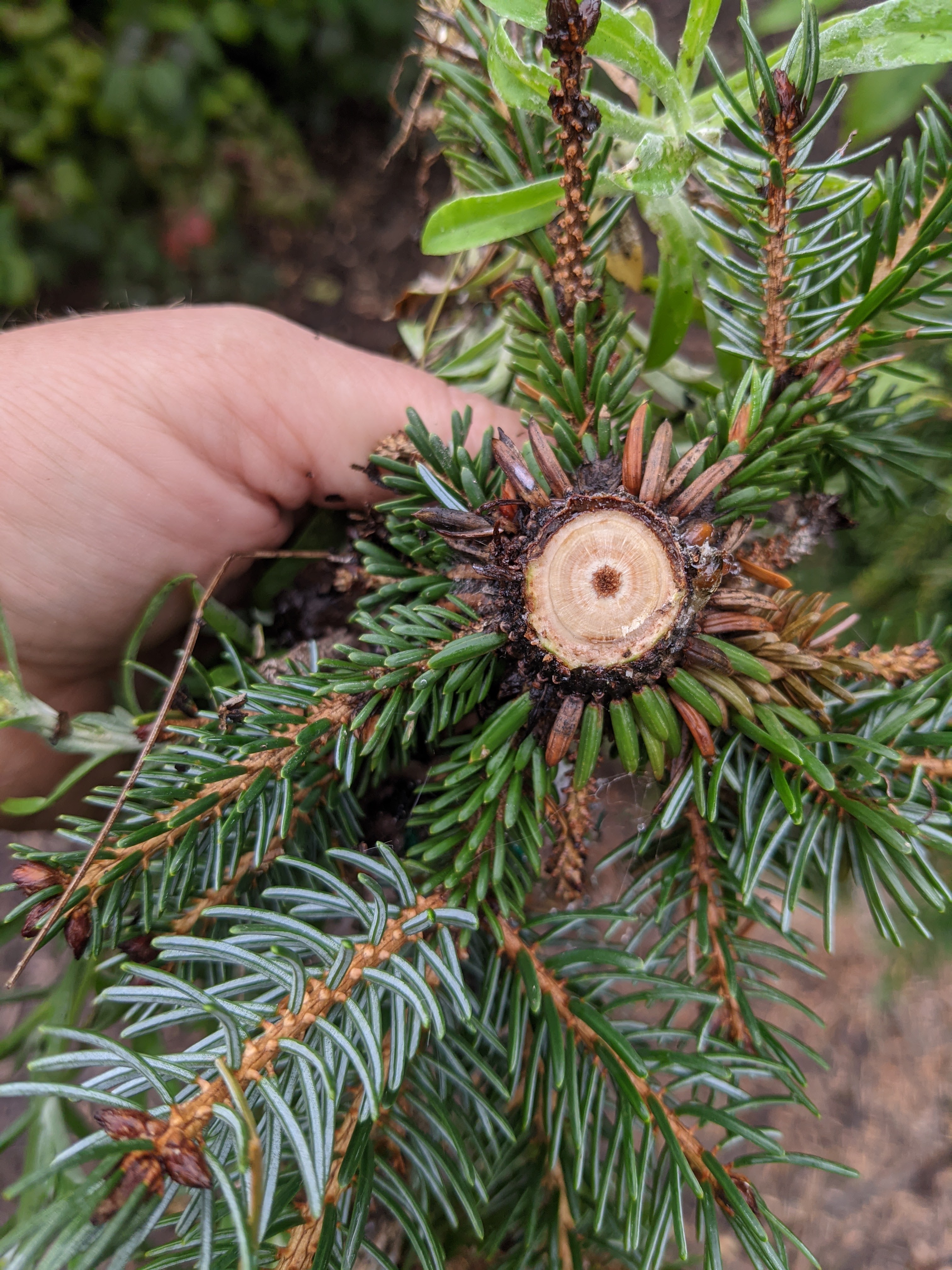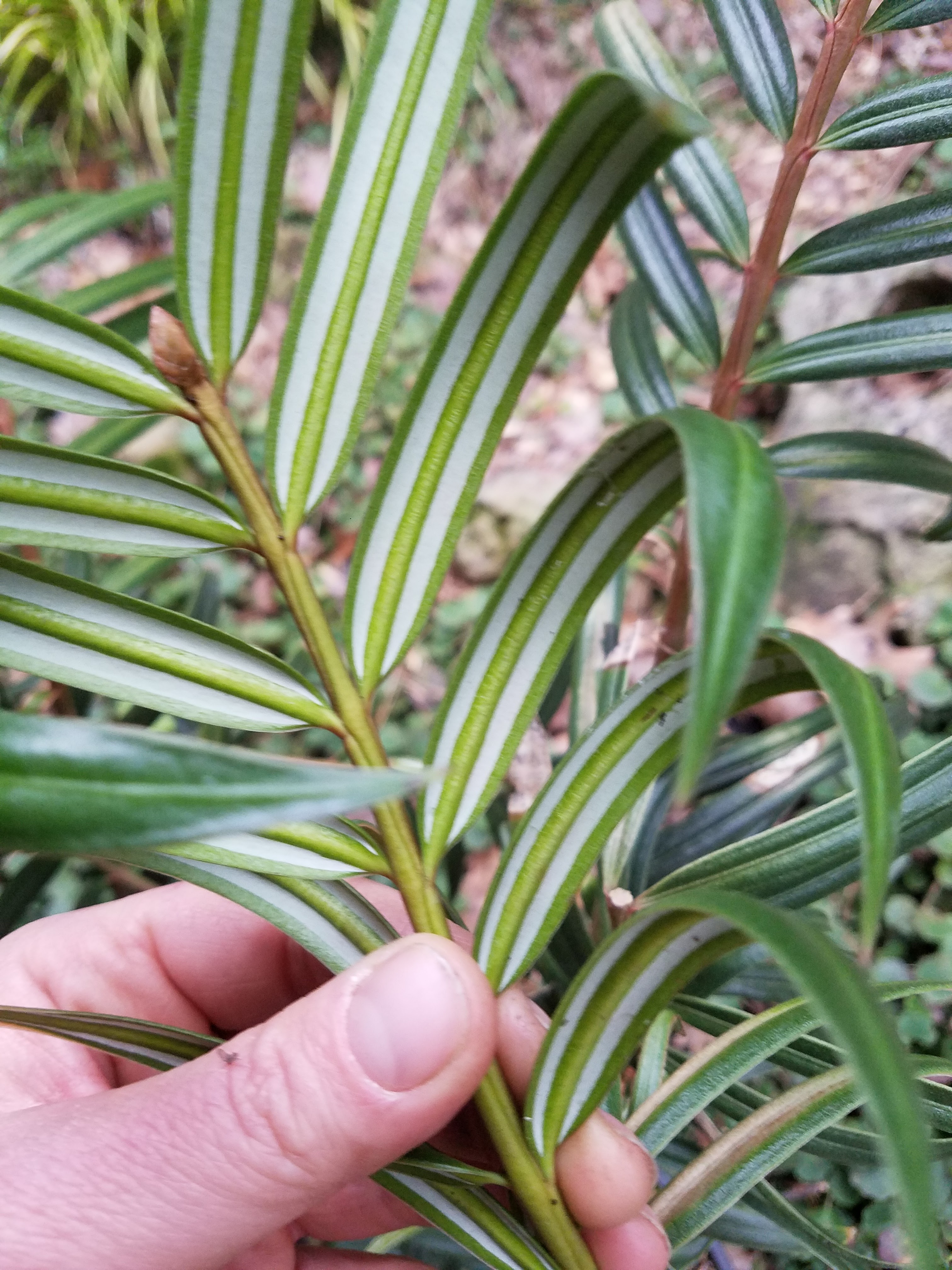The Scent of Christmas: Where Does It Come From?
go.ncsu.edu/readext?976134
en Español / em Português
El inglés es el idioma de control de esta página. En la medida en que haya algún conflicto entre la traducción al inglés y la traducción, el inglés prevalece.
Al hacer clic en el enlace de traducción se activa un servicio de traducción gratuito para convertir la página al español. Al igual que con cualquier traducción por Internet, la conversión no es sensible al contexto y puede que no traduzca el texto en su significado original. NC State Extension no garantiza la exactitud del texto traducido. Por favor, tenga en cuenta que algunas aplicaciones y/o servicios pueden no funcionar como se espera cuando se traducen.
Português
Inglês é o idioma de controle desta página. Na medida que haja algum conflito entre o texto original em Inglês e a tradução, o Inglês prevalece.
Ao clicar no link de tradução, um serviço gratuito de tradução será ativado para converter a página para o Português. Como em qualquer tradução pela internet, a conversão não é sensivel ao contexto e pode não ocorrer a tradução para o significado orginal. O serviço de Extensão da Carolina do Norte (NC State Extension) não garante a exatidão do texto traduzido. Por favor, observe que algumas funções ou serviços podem não funcionar como esperado após a tradução.
English
English is the controlling language of this page. To the extent there is any conflict between the English text and the translation, English controls.
Clicking on the translation link activates a free translation service to convert the page to Spanish. As with any Internet translation, the conversion is not context-sensitive and may not translate the text to its original meaning. NC State Extension does not guarantee the accuracy of the translated text. Please note that some applications and/or services may not function as expected when translated.
Collapse ▲A live Christmas tree adds extra presence to the Christmas season. It stems back from a time when Europeans and other cultures in temperate climates would bring greenery cut from the wild into their homes to bring life inside and brighten up the dark winter nights. There are customs and traditions around the world around different types of greenery, but in the United States we love our Frasier Firs, Abies fraseri. It should be extra special to our North Carolina hearts, as Frasier Firs are native to the Appalachian Mountains and North Carolina is one of the top Christmas tree-growing states in the country. As someone who grew up here in North Carolina, I have always loved the smell of a fresh Christmas tree, but what causes this unique scent?
Frasier Fir, Abies fraseri
The Frasier fir is in the genus Abies, which is in the Pine Family, Pinaceae. That family is known for its evergreen members with needle-like leaves, cone-like fruit, and sappy nature. Species of Abies occur around the world and are sometimes used in their respective areas as Christmas season decorations. Horticulturists have brought exotic firs into the U.S. to try growing them in our various climates in the U.S., given how challenging it can be growing a Frasier fir outside of the mountains. One of the hallmarks of this family is the presence of thick sap, which the tree uses to protect itself from insect and animal damage. It acts almost like a self-sealing band aid. Humans have used this sap for other industrial purposes, as well (think turpentine)!
brought exotic firs into the U.S. to try growing them in our various climates in the U.S., given how challenging it can be growing a Frasier fir outside of the mountains. One of the hallmarks of this family is the presence of thick sap, which the tree uses to protect itself from insect and animal damage. It acts almost like a self-sealing band aid. Humans have used this sap for other industrial purposes, as well (think turpentine)!
The Scent of Christmas
Every Christmas candle seems to be named after some sort of tree, but nothing comes close to the real thing. The scent is coming from the tree releasing volatile compounds from the foliage and other tissues in your home. These volatiles include monoterpenes, sesquiterpenes, and terpenoids. It is hard to recreate them in candle form because they can quickly evaporate.
These specialized compounds help plants survive periods of stress. Some monoterpenes have been shown to stop insects feeding on the tissues in some species of pines. Some terpenoids have been shown to have antimicrobial effects. Remember, trees can’t run away or go to the doctor, so they have to be able to take care of themselves where they are!
The big heavy-hitter compound for Frasier firs is a sap-like substance called oleoresin, and it helps Frasier firs to defend against certain pests and pathogens. This substance is especially prevalent on the buds of trees. For those of you who have wrestled a Christmas tree know when they walk away feeling sticky. Oleoresin has a low boiling point and contains terpenes. When the trees are displayed indoors, the ambient temperature heats the oleoresin, causing the terpenes to evaporate. This is why you only need a few sprigs to get that quintessential Christmas tree smell!
have wrestled a Christmas tree know when they walk away feeling sticky. Oleoresin has a low boiling point and contains terpenes. When the trees are displayed indoors, the ambient temperature heats the oleoresin, causing the terpenes to evaporate. This is why you only need a few sprigs to get that quintessential Christmas tree smell!
Resources




